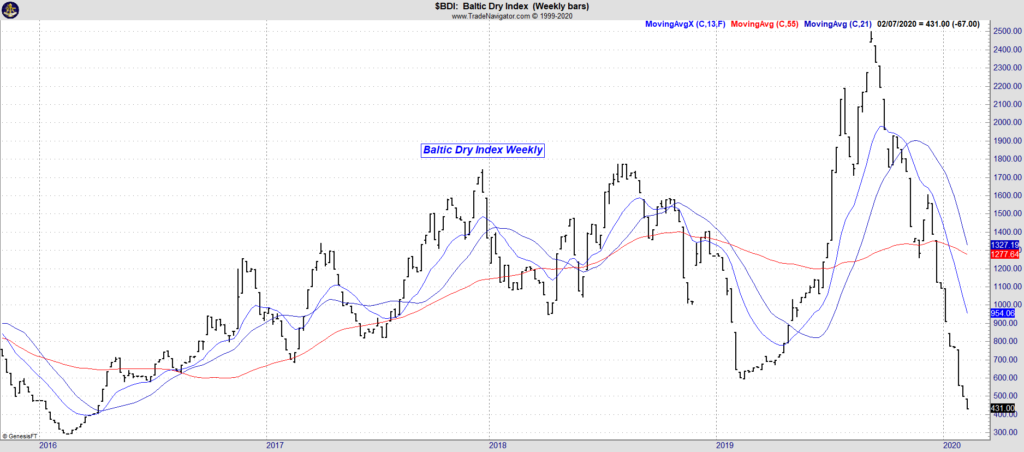A farmer that I have known for years used to jokingly say, “If I didn’t have bad luck, I wouldn’t have any luck at all.” At least I think he was joking. Of course, there is nothing funny about it, but one has to suspect this is the sentiment that is currently shared by a number of people living in China. African Swine Fever has devastated their hog industry, and the coronavirus has now infected more than 40,000 people in that nation and just over 900 deaths (probably understated), and now residual costs and effects are beginning to come to light. Annual inflation numbers for January have been released and pushed up to 5.4%, marking the highest figure since October 2011. The main culprit, as you can imagine, was rising pork prices, which were 20.6% higher year over year and have increased for the 11th month in a row. To add a little insult to injury, the ag ministry also reported over the weekend that opening of new hog facilities in the Hubei Provence had been delayed because of the virus. While not a pronounced as a week ago today, these issues continue to weigh on the trade.
There is one market that certainly has not shaken off the concerns surrounding slowing global trade in response to trade wars and viruses and that is the Baltic Dry Index. As you can see on the chart this index has continued to plummet lower. As of the close last week, we had pushed down to levels not witnessed since early 2016, which would seem to suggest that there has been no uptick in global activity, at least the type that would demand the need for dry bulk containers.
ASF was in the news again this morning, but this time at least, not in China. The Philippines confirmed a new case and have reportedly culled 400 head. If you recall, a few weeks ago, hog futures broke on the news that there was a vaccine that will soon be available for this disease, which obviously cannot come quickly enough.
While one has to suspect that the report tomorrow will be a non-event, particularly knowing the USDA will not be making any adjustments for the Phase One trade deal but nevertheless, here are trade estimates; 2019/20 domestic ending stocks for corn are expected to total 1.864 billion bushels, which would be down a mere 28 million bushels from last month. Beans are expected to drop 32 million to 443 million and wheat 11 million to 954 million. Had China not experienced the coronavirus outbreak, I would not have been surprised to have seen numbers reduced just a bit more. Very little change is anticipated for the South American crops either. The average estimate for Brazilian beans is 123.65 MMT versus 123 and corn, 100.85 MMT instead of 101. For Argentina, the bean estimate is 53.15 MMT, up from 53.0 and corn at 49.97 instead of 50.0. World ending stocks for corn are expected to slip down to 297.19 MMT from 297.18, and wheat to be lowered to 287.44 compared with 288.08, but beans are expected to increase from 96.67 MMT to 96.90.
